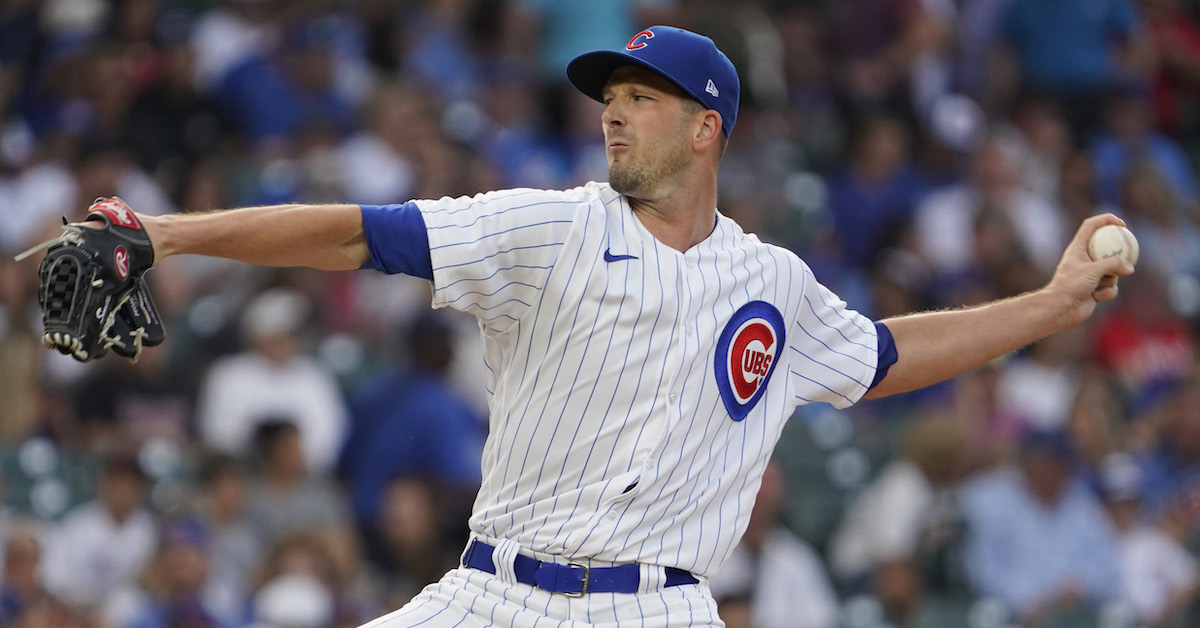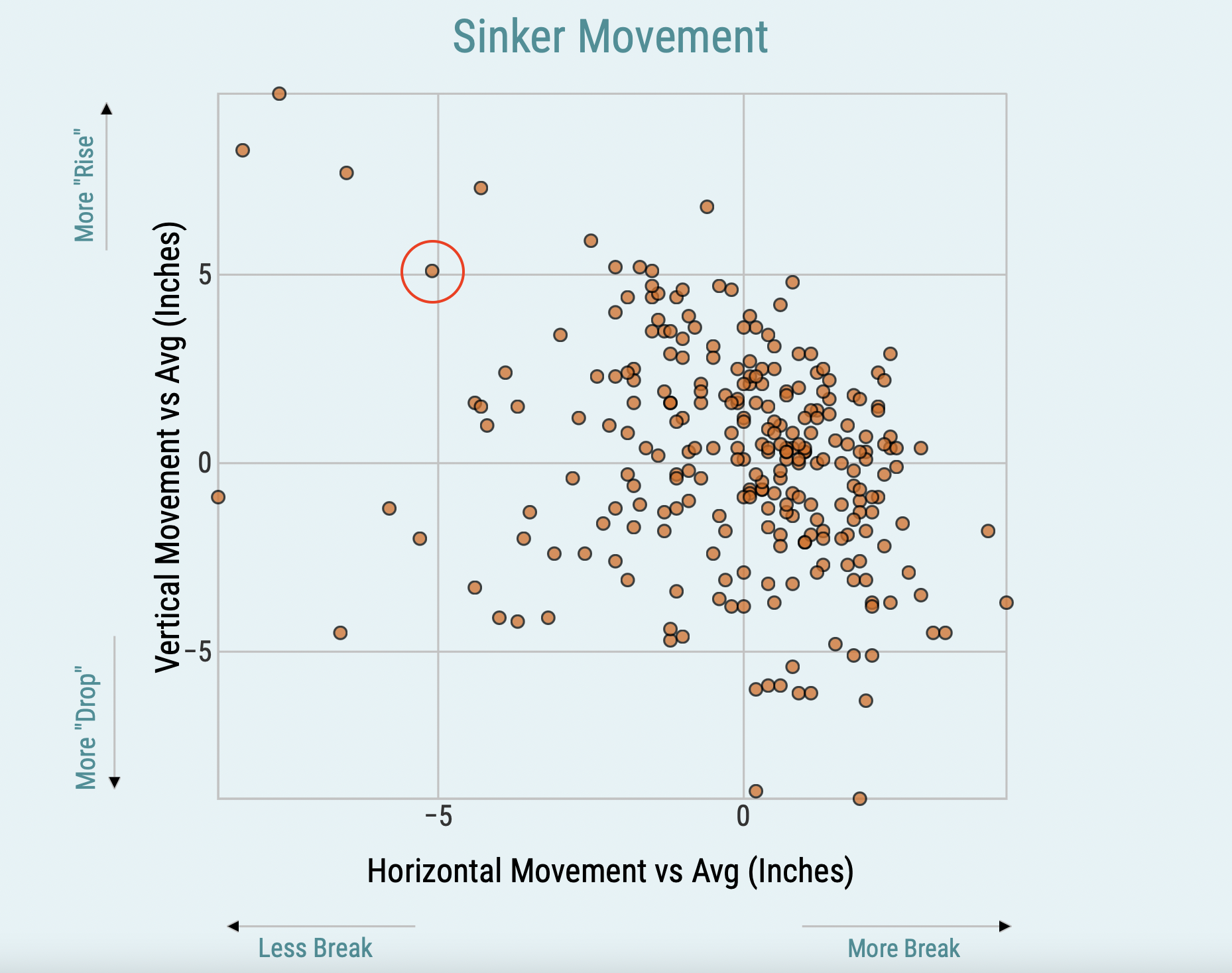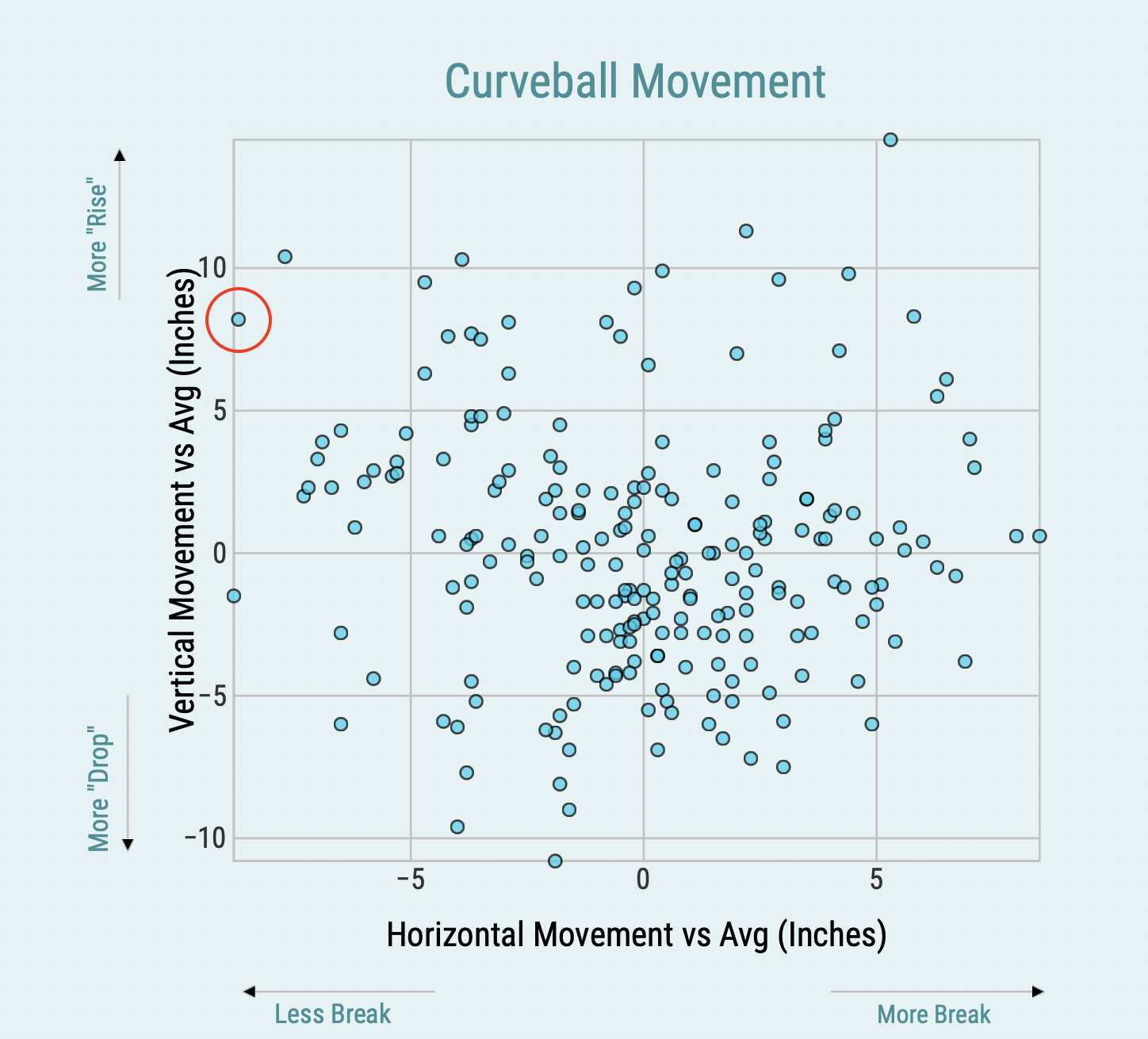
Maybe it’s too quickly to say that Drew Smyly has turned his season round from the bullpen, however he’s actually heading in the right direction. In 22 begins this 12 months, he pitched to a 5.40 ERA and a 5.32 FIP. Opposing batters slashed .274/.337/.501 in opposition to him; in different phrases, he turned the common hitter into Austin Riley. On the flip facet, Smyly has a 3.72 ERA and three.41 FIP in 19.1 innings of reduction. Over the previous month, he has regarded even higher. The small pattern dimension disclaimer applies, besides, his 2.61 ERA and a couple of.29 FIP are notable. His opponents are slashing .237/.293/.421; that’s much less Riley and extra Hunter Renfroe.
As a starter, Smyly wasn’t a giant strikeout risk. But, as a reliever, he has struck out 27 of the 80 batters he has confronted. That’s a 33.8% strikeout price, or 12.57 Ok/9. Since his first reduction look on July 22, he ranks among the many high ten certified NL relievers in each metrics. Even higher, he has upped his strikeouts with out giving out any extra free passes. His 8.0% stroll price was run-of-the-mill for a beginning pitcher, however his 7.5% price is considerably higher than common for a bullpen arm.
The pitch-level knowledge helps to elucidate Smyly’s transformation right into a strikeout artist. He’s throwing all three of his pitches with elevated velocity and utilizing his greatest whiff pitch, his curveball, extra typically. His zone price is up, as is his chase price, and consequently, he’s incomes extra whiffs and first-pitch strikes.
Now that I’ve completely impressed you with tales of Drew Smyly reborn, it’s time to come back clear. The veteran southpaw’s efficiency as a reliever isn’t the true motive I’m writing about him right this moment. Pretty much as good as he’s been, I have to see greater than 11 appearances earlier than I dub him the following Dennis Eckersley. However whereas I used to be evaluating Smyly’s stats between the bullpen and rotation, one quantity stood out greater than another — greater than the speed, greater than the walks, and much more than the strikeouts.
Pitching out of the bullpen, Smyly has upped his groundball price. Groundball pitchers aren’t inherently higher than fly ball pitchers, however in his case, conserving the ball on the bottom is a great concept. Not solely do the Cubs have among the best infield defenses within the league, however Smyly has additionally had fairly a little bit of bother conserving the ball within the yard. His 1.83 HR/9 as a starter ranks ninth-highest within the majors (min. 100 IP).
What’s extra, Smyly hasn’t simply elevated his groundball price; he has elevated it by a whopping 7%. That’s the distinction between the common starter and Justin Steele, one of many premier groundball pitchers within the Nationwide League. But even so, Smyly’s groundball price as a reliever is nonetheless under league common. Simply how low was his groundball price as a starter? Let’s simply say it might be a music by Flo Rida that includes T-Ache. Amongst all beginning pitchers this season (min. 100 IP), solely 9 others have induced a groundball on one-third or fewer of balls put in play. And even amongst that group, Smyly stands alone:
Backside 10 Starters by Groundball Price
Pitch varieties through Statcast
Smyly is the one one who throws a sinker as his major fastball. Certainly, he’s one in every of solely two major sinker-ballers (together with Kyle Freeland) to have a groundball price under 40%. He’s additionally the one starter with a groundball price under league common who doesn’t throw a four-seam fastball in any respect. Sinkers are inclined to induce groundballs; due to this fact, the pitchers who throw them are usually groundball pitchers. However not Smyly.
When you’re acquainted with Smyly’s arsenal, you may level out that whereas he makes use of a sinker as his major fastball, his major pitch is definitely his curveball. But exterior of a sinker, no pitch kind generates extra groundballs than a curve. Among the many 58 starters (min. 100 IP) who throw a curveball or a knuckle curve no less than 10% of the time, solely Max Scherzer has a decrease groundball price than Smyly, and Smyly makes use of his curve about 4 occasions as typically as Scherzer.
The sinker and curveball account for slightly below 90% of all Smyly’s pitches, and his groundball price is under league common on each. As a starter this season, he had a 37% GB% on his curve and a 29.1% GB% on his sinker; league common is about 46% and 55%, respectively. Clearly, his sinker is the true offender, though his curveball isn’t serving to issues. Of all of the beginning pitchers who’ve given up no less than 10 groundballs on sinkers this 12 months, none has a decrease groundball price than Smyly. This isn’t a brand new improvement, both. During the last 5 years, he has a 30.5% groundball price on the pitch.
So what makes his sinker distinctive? For one factor, Smyly doesn’t find it within the typical style. Of all of the sinkers he threw within the strike zone throughout his time as a starter, 43.6% had been situated within the higher third; league common is 23.6%. What’s extra, all these excessive pitches got here on the expense of sinkers down low. Solely 16.7% of his sinkers within the zone had been within the decrease third in opposition to a league common of 42.2%. And as you may anticipate, excessive sinkers don’t generate almost as many balls on the bottom:
Sinkers by Location
| Location | League Common GB% |
|---|---|
| Higher Third | 40.3% |
| Decrease Third | 63.1% |
SOURCE: Baseball Savant
The numbers are much more excessive exterior the strike zone. Of all of the sinkers Smyly threw exterior the zone, 83.8% had been on the higher half of the world surrounding the strike zone — almost twice the league common. He solely threw 62 outside-the-zone sinkers on the decrease half, and opposing hitters solely swung at eight. Of these eight swings, solely two led to balls in play, and neither was a grounder. General, Smyly had a 19.4% groundball price on sinkers exterior the strike zone, which is even decrease than his groundball price on pitches in the zone. For many pitchers, the other is true; getting batters to chase at a sinker will be one of the simplest ways to generate groundballs.
With all that stated, location nonetheless can’t clarify all the things. Smyly’s groundball price is under league common up excessive, down low, and in all places in between. It doesn’t matter what, it simply doesn’t generate groundballs like an atypical sinker. And why is that? As a result of it isn’t atypical. Smyly is one in every of solely 4 pitchers with no less than -5.0 inches of vertical and horizontal motion (vs. common) on his sinker. He’s in a area of his personal on the chart under:

Certainly, his sinker strikes rather a lot like a typical four-seam fastball. For comparability, right here’s the way it appears subsequent to Paul Blackburn’s four-seam, a pitch with related velocity. Smyly’s sinker has extra arm-side run, however the two pitches have almost equivalent vertical motion. But whereas Blackburn’s four-seam is completely common, Smyly’s sinker is a complete outlier:
A Fastball Comparability
| Pitcher | Pitch | MPH | Vertical | Vertical (vs. Avg) | Horizontal | Horizontal (vs. Avg) |
|---|---|---|---|---|---|---|
| Drew Smyly | Sinker | 91.9 | 16.4 | -5.1 | 8.3 (Arm) | -5.1 |
| Paul Blackburn | 4-seam | 91.9 | 16.1 | -0.1 | 6.1 (Arm) | -0.4 |
SOURCE: Baseball Savant
His sinker lacks drop as a result of it spins on such a vertical axis; extra particularly, he throws it with backspin, permitting the pitch to withstand the pull of gravity. It’s exactly the dropping motion of a sinker that generates groundballs. With out that drop, Smyly can’t obtain the identical outcomes.
Curiously sufficient, it’s an identical story along with his curveball, which has considerably extra rise than most curves and suits comfortably into its personal little spot on the chart under:

A mix of location and motion explains why Smyly wasn’t producing groundballs as a starter, regardless of such a groundball-friendly arsenal. So right here’s the million-dollar query: Can he actually keep a better groundball price as a reliever? It could actually be in his greatest curiosity, what with Dansby Swanson, Nico Hoerner, and Nick Madrigal manning the infield behind him. The pattern dimension is tiny to this point, however I’m inclined to say that Smyly can stick with it.
On every particular person pitch he throws, his groundball price hasn’t truly gotten a lot greater. At the moment, Smyly is operating a 33.3% price on his sinker and a 42.3% price on his curve; as a starter, these numbers had been 29.1% and 37%, respectively. However he’s been utilizing fewer sinkers total. As a substitute, he’s throwing extra curves and extra of his tertiary pitch, a cutter. The cutter performs an even bigger position in his repertoire in opposition to lefties, and as a reliever, he has had the platoon benefit extra typically. Thus, he’s been throwing extra cutters and inducing extra groundballs consequently. His cutter has a better groundball price than both of his different pitches, and actually, it’s his solely pitch with a groundball price greater than league common.
So long as Smyly continues to lean on his curveball and face extra same-handed hitters out of the bullpen, due to this fact shedding his sinker, I don’t see why he can’t keep a extra respectable groundball price. It’s not the everyday recommendation you’d give to a pitcher who needs to generate extra balls on the bottom, however it appears to be the strategy that works for him.
Stats and rankings as of September 14.
